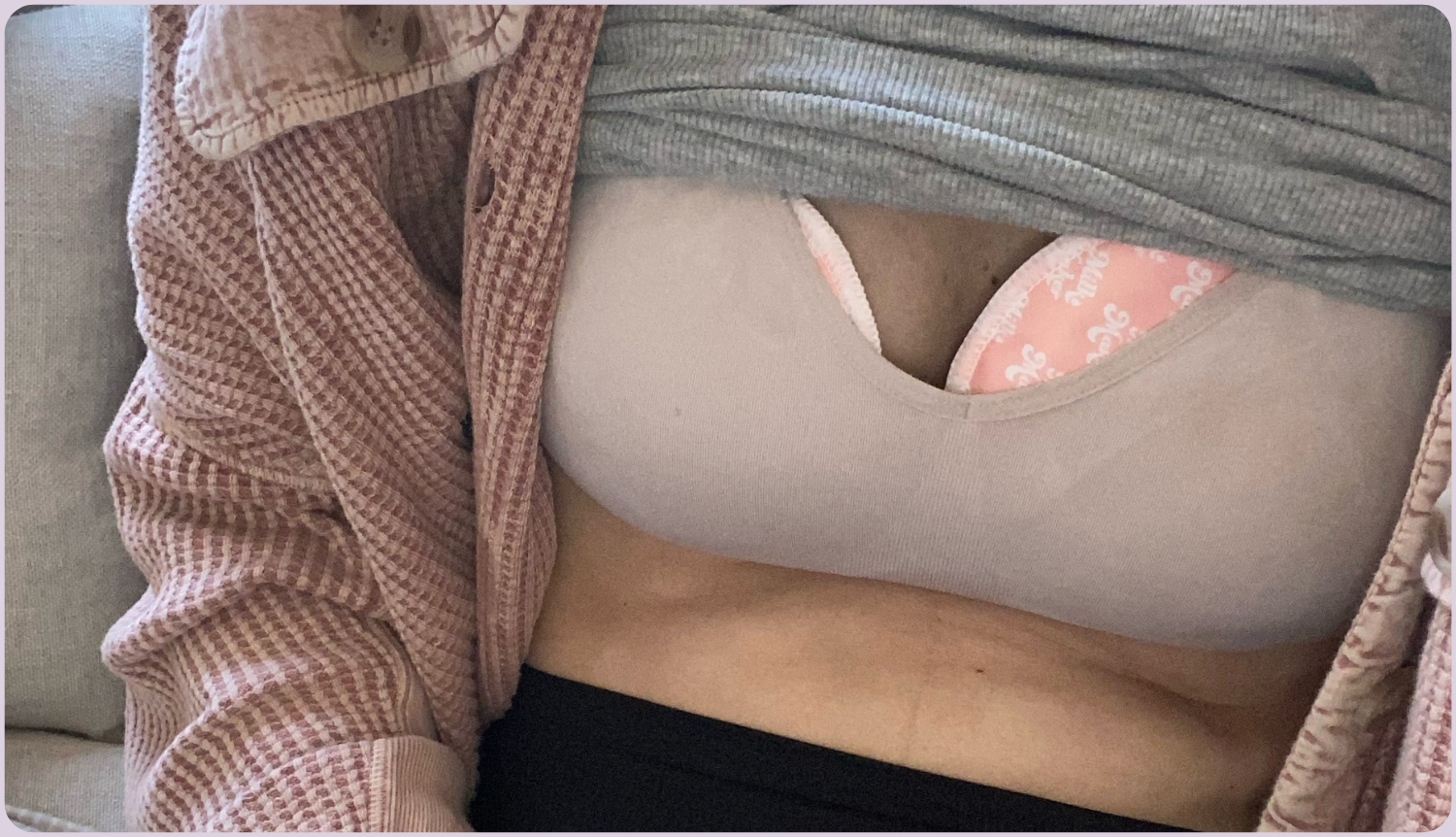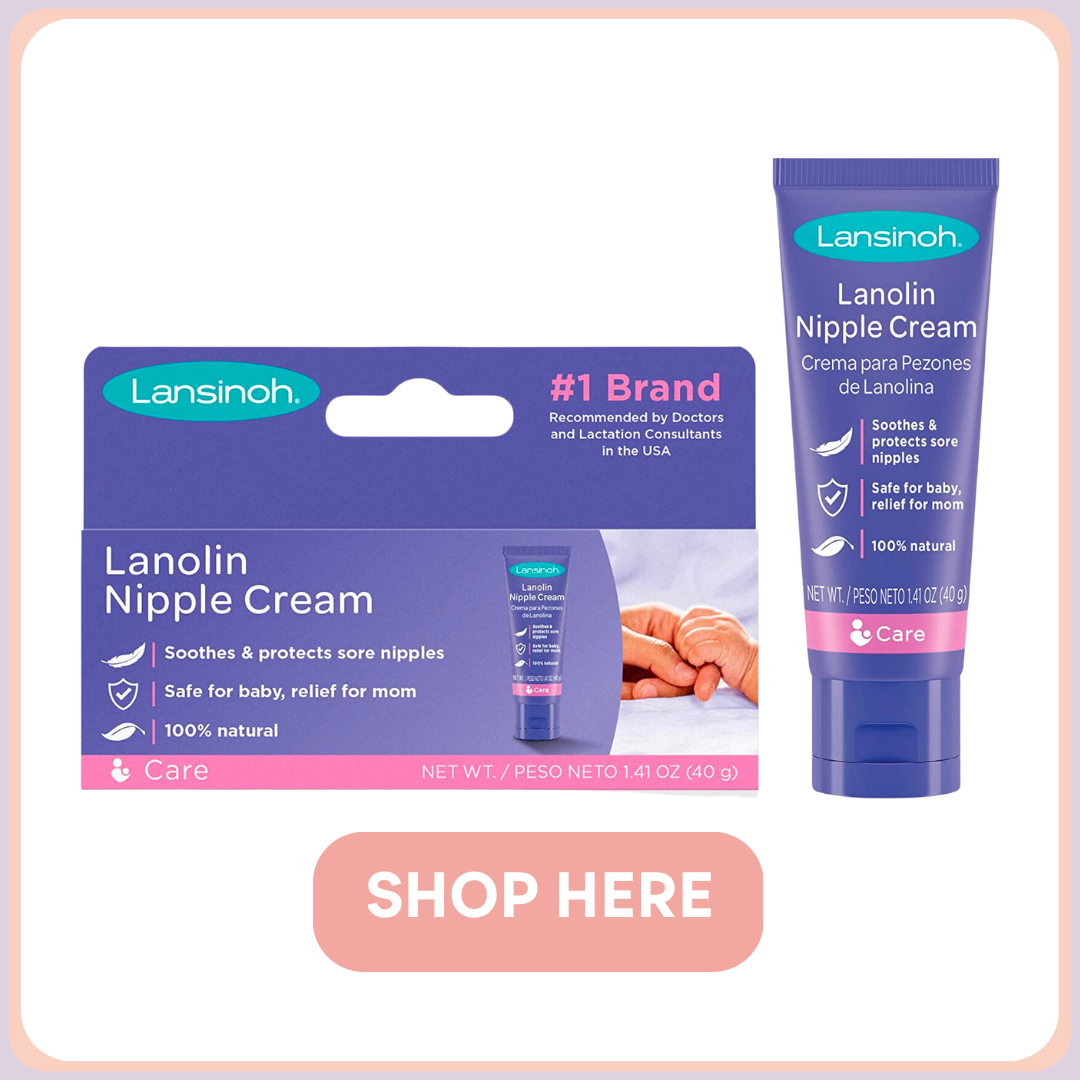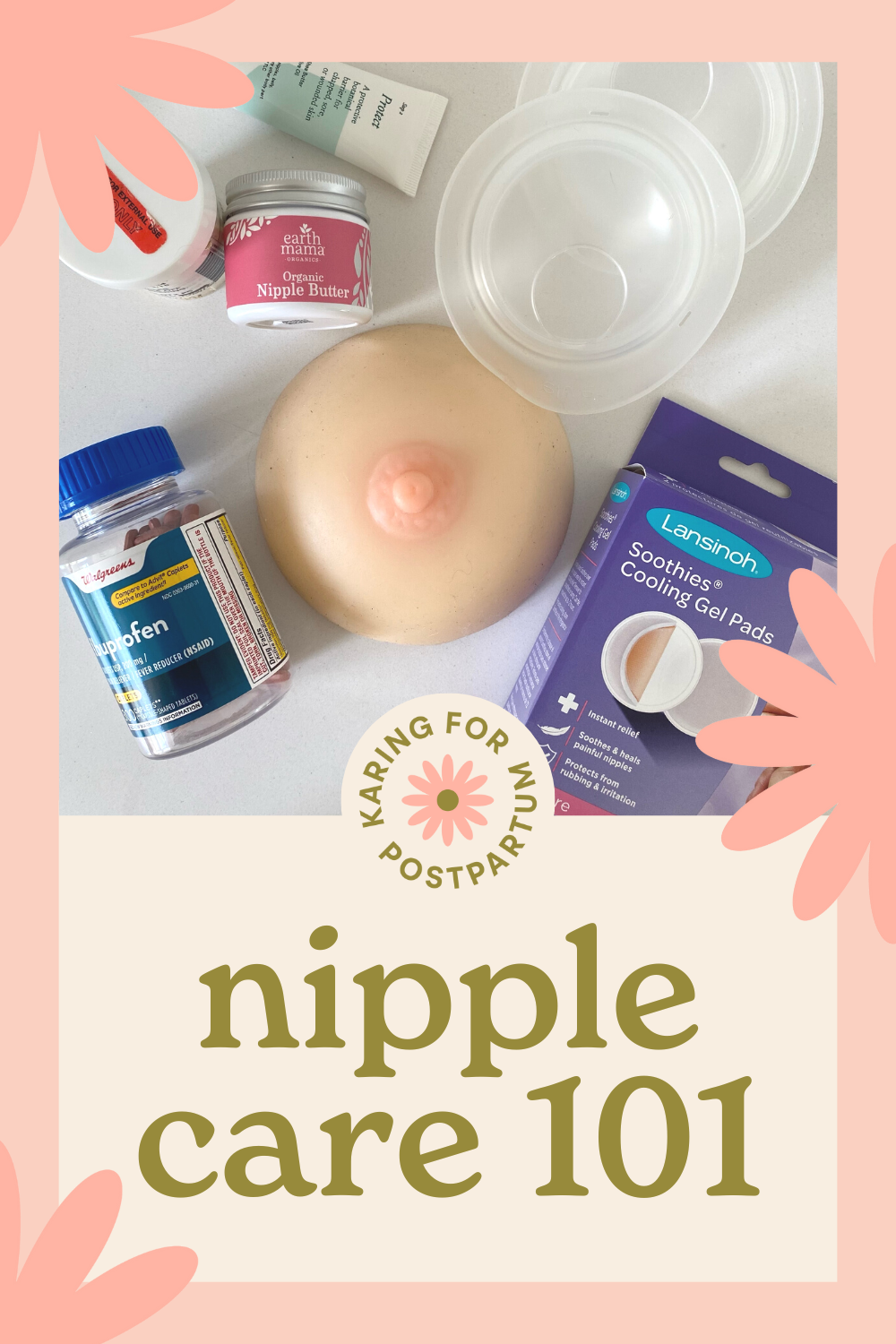Nipple Care 101
Nobody likes shredded nips. It can make us dread every moment we have to feed our baby or pump (which should be positive experiences)! Feeling like you’re on the verge of tears thinking about having to latch your baby or turn on your pump is definitely not what we want! It should not be this way!
We want to have healthy, happy nipples, yeah?
Taking care of our nipples while breastfeeding is so important, but finding answers or solutions isn’t going to be a one-size-fits-all deal. Everybody is different, so everybody is going to respond differently to different care options. It’s also important to be working on the deeper root cause of the cracked/bleeding/sore nipples. Breastfeeding can be sensitive, yet it should not be painful. If you’re experiencing pain with nursing and/or pumping, we have to find out why this is happening and work to fix the issue. Nipple creams/ointments/shells/etc are so incredible and helpful when we’re comforting the pain— but they’re band aids. If we don’t fix the real issue (we will talk through some of these below), the cycle is going to continue. Nipple creams are a temporary “fix”, not a solution!
Interestingly, in knowing how different we all are, it’s important to know that what works for the majority of moms may not necessarily work for you! Research is absolutely amazing, but we often need to take it with a grain of salt; as research definitely should not define everything you do as a parent. (Which is hard when we just want answers!). Sometimes, things can be trial and error. Trialing different solutions/products to find what our body responds best to!
I’ve been there. For example, Lanolin is a fan-favorite per research, and so many do people love it. For me, personally, I didn’t feel like it really did anything. I had to find what worked for my body— and Lanolin was not it. And that’s okay! I tried it, didn’t help much, so we moved on to something else. No biggie!
Anyway, let’s dive more in depth about ways to help those poor nips in terms of creams, etc as well as identifying those underlying issues that may be leading to the damage, itself.
Let’s get started!
DAMAGED nipples
Damage to your nipples is common as both mom and baby learn about feedings (whether at breast or via pump), but it isn’t “normal”.
If our nipples are damaged, we need to dig deeper to figure out why this is happening. The WHY is so important here— slapping on some cream may just be a bandaid to the actual issue at hand. We need to remedy the root cause, or it could be a vicious sore-nip cycle.
Here’s what I call the Gold Standard for Nipple Damage:
Educating yourself on breastfeeding practices like latch, positioning, etc. (I have a course diving into that here!)
Finding out what’s causing the damage and working on correcting that.
Looking to an LC for help if you’re unable to identify the issue
All of the ointments and creams in the world (though amazing) are not going to fix the problem! Though, they may provide some relief to the pain and discomfort, which is important as you continue to work through finding the root issue and feeding your baby.
WHY are my nipples damaged?
There may be a multitude of reasons why your nipples are damaged with feeding or pumping sessions. It’s important to consider when the pain is happening and evaluating what may be a little “off”. Here are a few examples of potential causes for nipple damage:
Shallow Latch— make sure baby is getting a nice deep latch on the breast tissue, not just the nipple alone
Positioning— when you or baby is not comfortable with positioning, it can be easier for baby to slide down on the nipple during feedings
Oral ties— when baby has oral ties (tongue tie, buccal ties, lip ties) it can prevent their mouth/tongue/lips/cheeks from latching deeply and appropriately onto the breast
Thrush— thrush is a fungal infection passed between mother and baby, and can lead to nipple pain in the mother
Wrong pump flange size— if you’ve been pumping, the flange size (little funnel piece that sits on the breast) is extremely important. Your nipple diameter should be appropriately measured, and your nipple should be able to move freely inside the tunnel without pulling in areola. Many women are using too large or small of pump flange sizes, which can lead to nipple damage and decreased milk output
Pump Suction— more suction strength does NOT equal more milk. Turn the suction to where it’s tolerable while pumping.
Not only do many of the above lead to nipple damage, but also a decreased milk supply over time if not corrected. This is why it’s so important to address any issues or questions you have with your LC!
Answering these things and finding that end-goal solution is the ultimate goal, however if you need ointments, barriers, and short-term remedies to get some relief, then yes, absolutely do that!
NIPPLE CARE options
**All of these suggestions are methods that you should be supplementing along with figuring out and remedying the root cause of the nipple damage.**
Like I said earlier, what works for others may not work for you! Take time to find a product that you feel works best for you and baby. There are so many nipple balms, butters, and ointments these days!
Topical Options
Lanolin. This is made from fat in sheep’s wool, so if you’re allergic to wool, you’ll want to avoid this. Can be soothing and protective for some mamas.
Earth Mama Nipple Butter. This is one of my favorites!
Bodily. I went through tubes of this when my nipples were damaged from Teddy’s oral ties!
Hydrogel Pads. These are so soothing and so cooling!
Provide instant, cooling pain relief/comfort
Provides a barrier so there is no friction on the nipple
You can stick them in the fridge for an extra umph of coolness
Make sure to read the brand package to see how long they’re supposed to last.
Do not use with nipple creams or ointments, because they will cancel each other out.
Air exposure is important, so don’t keep them covered 24/7.
All-Purpose Nipple Ointment (APNO). This requires a prescription. Some providers love it, some don’t and prefer more natural methods. When natural methods aren’t working, medication routes like APNO can be so important! As a nurse, I believe in medicine when it is necessary or indicated. There is a place for it! And maybe an APNO Rx is what your body would respond best to if other creams and ointments aren’t working. (Here is a DIY All-Purpose Nipple Ointment recipe you can discuss with your provider.). APNO saved me so many times as I struggled to nurse some of my babies. I don’t know what I would have done without it. Also, APNO is a compounded RX, so many times they have to be filled at a hospital or compounding specific pharmacy.
Barrier Options
When your nipples are damaged, it can be so incredibly sensitive. Like even air blowing by feels heinous! Having a barrier can be really helpful in some cases.
Breast shells. This is a device that creates a barrier/shell so your nipple isn’t getting any friction on your clothing or breast pad. It is a shell that just rests on your breast – it doesn’t have any suctioning, but they could still be used to catch some milk in the process too!
Nipple shields. This is a thin, flimsy shield that goes over your nipple for breastfeeding to create a thin barrier between baby’s mouth and Mom’s damaged nipple. I know that these can be handed out too much, but I do feel like these get such a bad rap when they can actually be such a useful tool for feeding with damaged nipples.
Pumping. Pumping with a proper flange size can be a great alternative to nursing for moms with damaged nipples. Some find that it provides some relief, which can be a really beneficial option when mama may be dreading latching baby on! This may be a temporary fix, but trying to lay out all options.
Silverettes. These are caps that you put on top of your nipples. These are not for use during nursing, they are just to create a barrier to protect your nipple between feeds. They can be really cooling, and silver has a lot of healing properties that can help with nipple fissures, cracks, etc. Here is a study that backs silver caps for nipple damage.
I know damaged nipples can suck the life out of you, but I promise you it will get better! Focus on relieving the pain and discomfort as much as you can while you put on your detective hat to figure out what is causing the nipple damage in the first place!
If you want more information on nipples + things, plus some demonstrations on how to use the barrier products, you can watch my nipple care highlight.
Remember, that’s our gold standard: solving the root issue.
Good luck, Mamas!
Xoxo
Karrie
P.S. Here are the links used in this blog:
Was this helpful? Save it for later or send to another mama!










